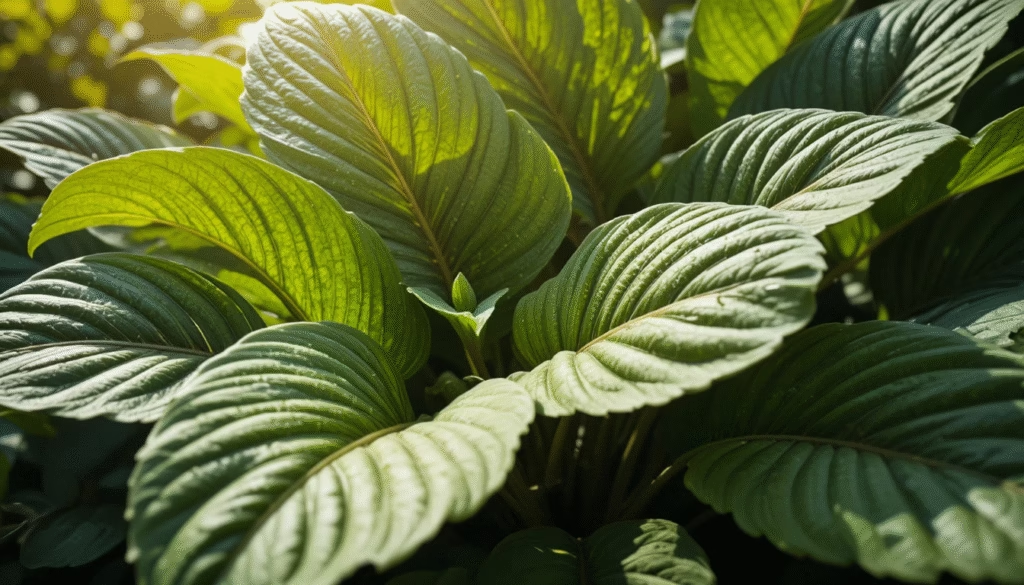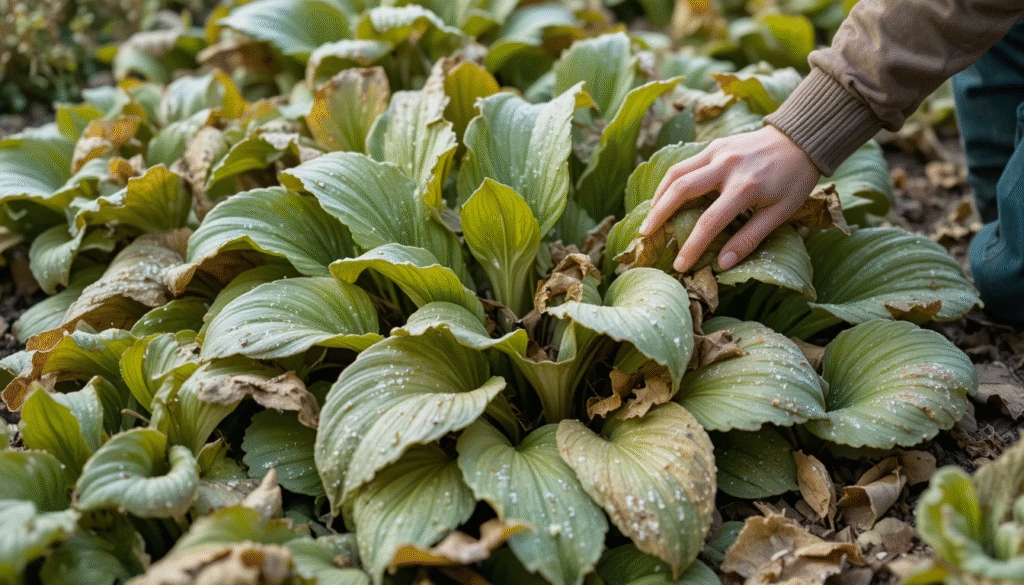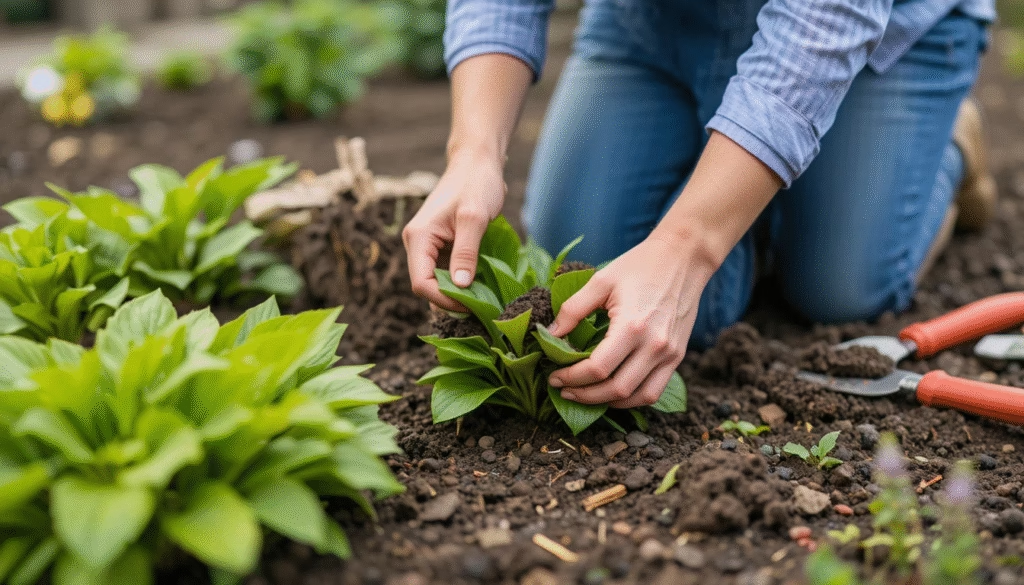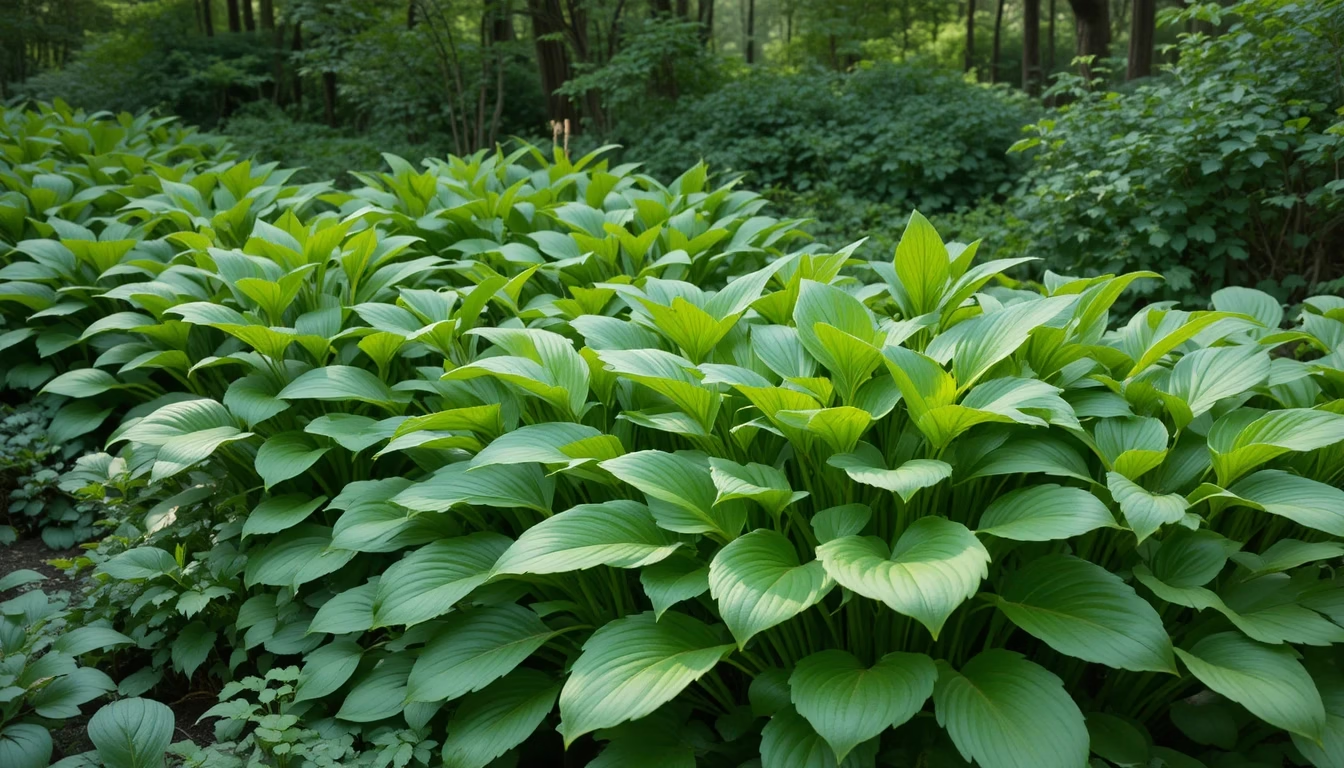Hostas are the heart of a shade garden, their lush foliage adding a serene charm like white kitchen with black hardware in a cozy home. As fall settles in, the question of when to prune these hardy perennials sparks both excitement and caution. Cutting back at the right time ensures a stunning spring comeback, while a misstep could weaken their vigor, much like peach leaves turning yellow on a ficus audry. This guide explores whether to prune hostas in fall or spring, how to do it right, and tips to keep them thriving, woven with gardening keywords like neem oil for spider mites and cordyline green for a vibrant landscape.
Why Pruning Hostas Matters

Hostas, with their rhizome-based growth, store energy over winter to fuel lush spring leaves, similar to planting winter rye grass for a green return. Fall pruning keeps beds tidy, deters pests, and directs energy to roots, ensuring a robust comeback. Waiting until spring is an option, but it risks pest issues and a messier cleanup, like black mastic clinging to a hardwood floor bathroom. Timing your cuts, like choosing chrome or brushed nickel for sage green bathroom cabinets, is key to maximizing plant health and garden beauty.
The Best Time to Prune Hostas
The ideal moment to prune hostas is just before or after a hard frost, typically mid-October to November, depending on your USDA zone. This is when leaves start yellowing or browning, signaling they’ve finished photosynthesizing, like yellow bells shrub fading in fall. Cutting too early—while leaves are still green—robs rhizomes of energy, potentially stunting spring growth or risking winter survival, akin to do deer eat crocus nibbling away blooms. Prune at this frost window to ensure vigor, like how high should a chandelier be above table for perfect balance.
What Happens If You Miss the Fall Window?

If you miss the fall pruning window, don’t panic—hostas are forgiving, like true 2×6 dimensions holding steady in an a frame log cabin. After multiple frosts or when temperatures drop below 30°F, leaves turn mushy and fall off naturally. Clean up this debris in winter or early spring, like how to dispose of a microwave to clear clutter. Use your hands to remove spent foliage once soil warms to 40°F, avoiding damage to emerging shoots, similar to septic safe cleaners for gentle care. Raking is fine before sprouts appear, but precision prevents harm, like load vs. line electrical wiring done right.
Leaving foliage over winter can insulate crowns during freeze-thaw cycles, but it invites pests like slugs and voles, which love hostas as much as cherokee purple tomato growing attracts gardeners. Debris can harbor slug eggs or cozy vole nests, so spring cleanup is crucial, paired with neem oil or diatomaceous earth to kill mites to keep spider mites at bay on nearby sting ray plant or philo white princess.
How to Prune Hostas for Optimal Health
Pruning hostas is straightforward but requires care, like crafting lawn mowing patterns for a pristine yard. Follow these steps:
- Clear Debris: Remove leaves and twigs around the base, like how to clean pool tile for a spotless finish.
- Trim Flower Spikes: Cut spent spikes close to the base, ensuring a tidy look, like flowers that start with s in a border.
- Cut Foliage: Use clean hand pruners for small patches or hedge shears for larger ones, snipping stems 2-3 inches above soil, like shower valve height precision. For big beds, a weed whacker works but avoid scalping, as careful as electrical panel parts handling.
- Sterilize Tools: If powdery mildew is present, disinfect tools between cuts to prevent spreading, like will bleach kill spiders for pest control.
- Dispose or Compost: Compost healthy clippings or bag diseased ones, like strip paint from concrete cleanup.
- Mulch Lightly: Add pine needles or straw, leaving the crown exposed, like rug size for queen size bed for perfect fit.
Dividing Hostas

Spring is the time to divide hostas, when shoots just emerge, like how to plant comfrey for new growth. Avoid cutting individual shoots—separating rhizomes gently prevents crown damage, reducing pest risks, like tiny roach invasions. This keeps plants healthy, ready to shine alongside cordyline green or african iris white.
Tips for a Thriving Hosta Garden
- Pest Patrol: Use neem oil for slugs or diatomaceous earth for pests, protecting monstera standleyana variegated or florida beauty philodendron nearby.
- Mulch Smart: Insulate with mulch in fall but remove in spring when soil hits 40°F, like what does potassium do for lawns for vigor.
- Pair Thoughtfully: Combine hostas with plants good around pools like hanging orchid cactus or snow queen plant for shade-loving beauty.
- Check Soil: Ensure well-drained soil, like how do you add nitrogen to soil for lima bean seedlings, to support growth.
- Plan Layouts: Design beds like yard mowing patterns, enhancing aesthetics with perennials part sun or flowers by a pond.
Conclusion
Pruning hostas in fall, just before a hard frost, sets the stage for a vibrant spring, like a white kitchen with black hardware bringing elegance to a space. If you miss the window, spring cleanup works, but fall cuts deter pests and keep beds neat. With clean tools, precise cuts, and pest control using neem oil, your hostas will thrive, complementing yellow bells shrub or philo white princess in a lush garden. Embrace the process, and your hostas will reward you with a stunning display, like feng shui for bathroom colors creating harmony.


Leave a Reply